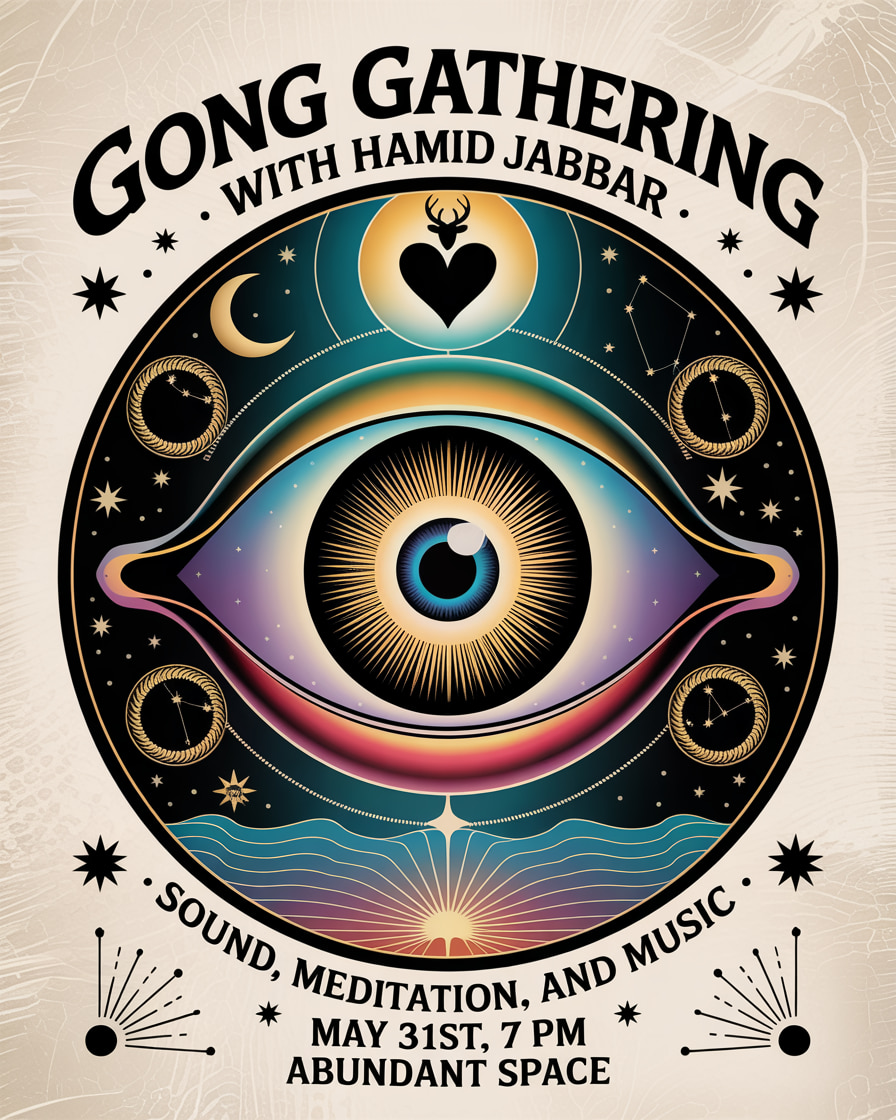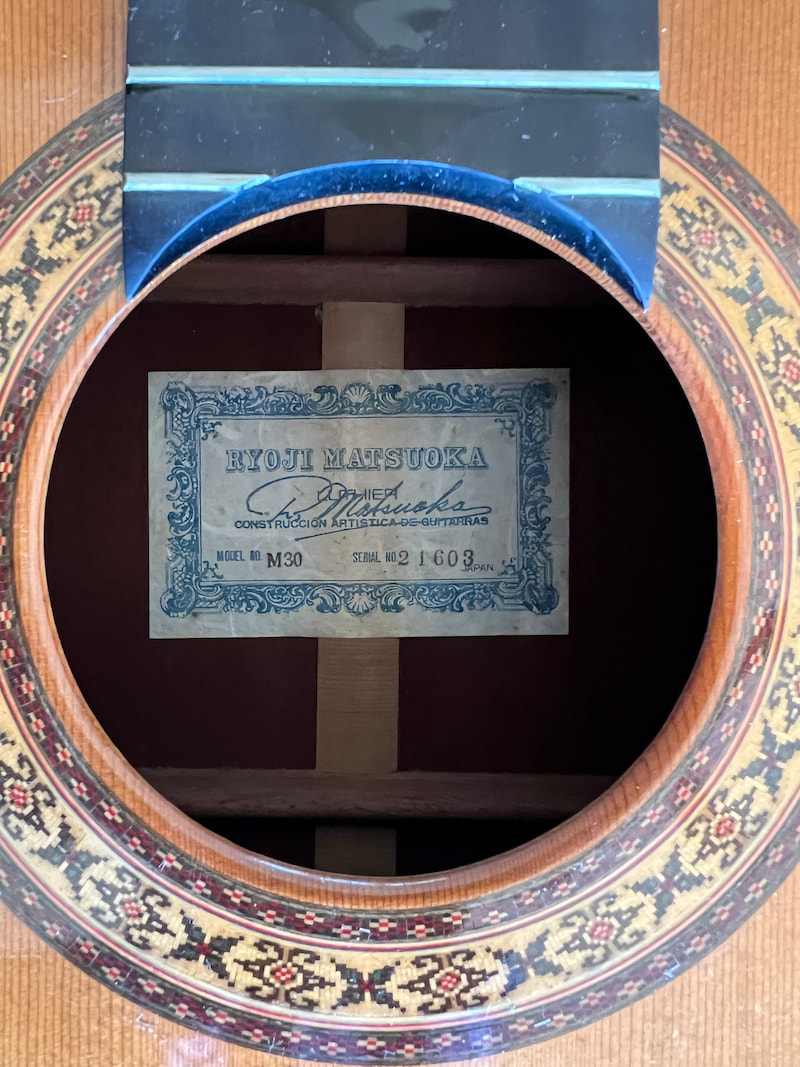All About Quartz Crystal Singing Bowls
This article attempts to clarify some of the myths about Quartz crystal singing bowls. Although many of the myths are helpful and harmless, others have created a uniquely deceptive environment around quartz singing bowls, where much of the information given to people about bowls is misleading or even false. Because these instruments can be powerful sound therapy tools, it is important to understand them and appreciate them for what they can give to us.
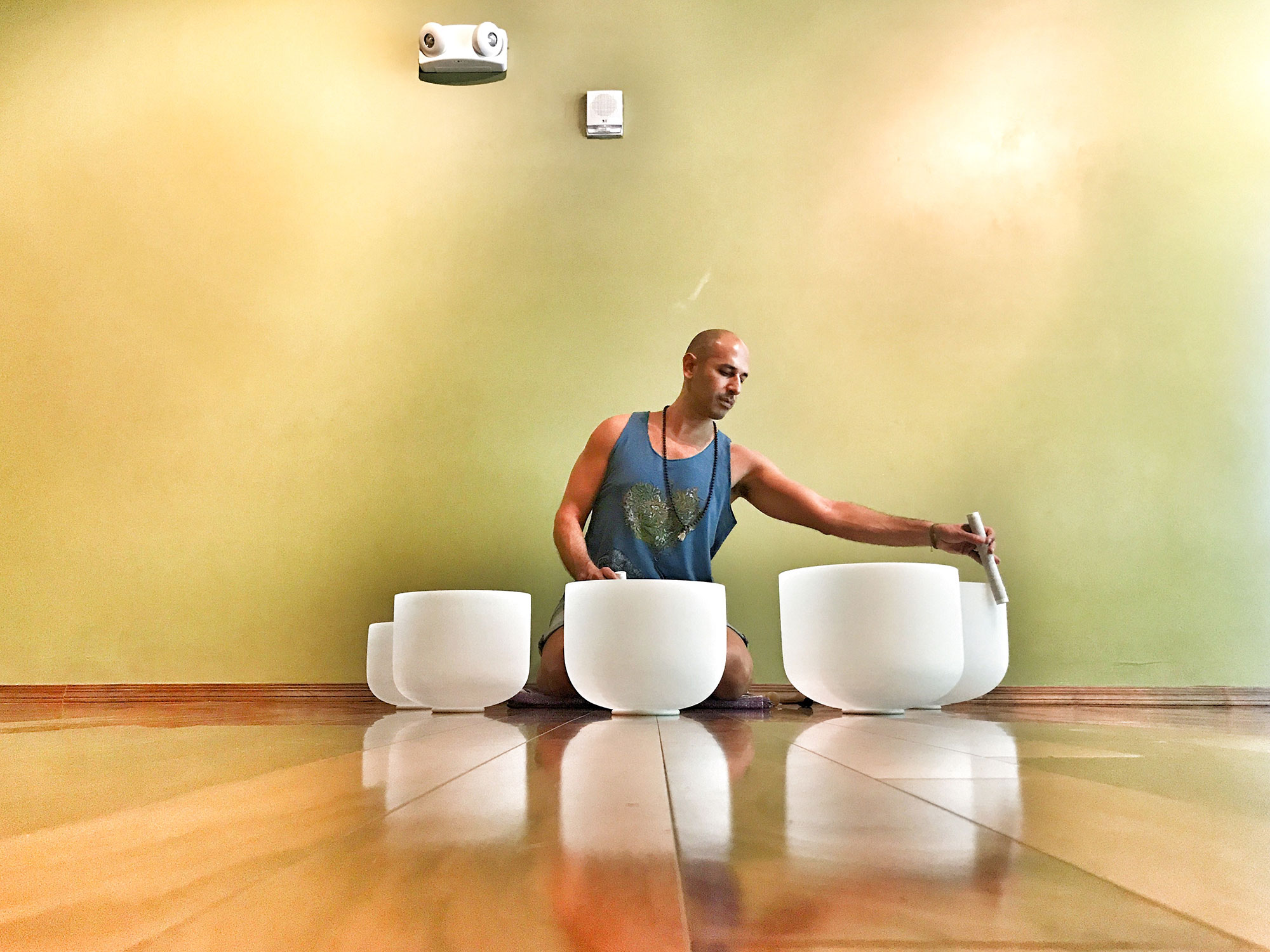
Hamid playing set of Frosted Bowls
History of Quartz Crystal Singing Bowls
Quartz crystal singing bowls are a modern invention. It was not until the 1980s that the silicon industry began to use quartz crucibles to grow single crystal ingots from silicon metal for use in the production of high quality silicon wafers–i.e. computer chips. These chips are found everywhere and still are made using the same methods. In fact, the smart phone or computer you are using to access this article may have silicon grown in a fused Quartz crystal bowl. Quartz crucibles are bowls made of quartz used in a laboratory setting. They were never designed as musical instruments, nor were the manufacturers of quartz crucibles generally concerned with their sound. Fused quartz glass is the only material that provides the temperature stability and other properties stable enough for the manufacture of single crystal ingots. It was undoubtedly someone in this industry who figured out that these crucibles (bowls) produce a resonant tone when “sung” or struck. This discovery, created a whole new use for these bowls in the world of sound. Nevertheless, the current manufacturers of quartz crystal bowls are generally the same manufacturers that continue to make quartz crucibles and other fused quartz glass products for industrial applications. These are not manufacturers who set out to create sound therapy instruments, though they now realize the value in this market.
Silica Sand
Silica Sand Composed of Tiny Quartz Crystals
One common myth is that quartz crystal bowls are made from precious crystals that are crushed. In reality, quartz crystal bowls are made from silica sand, which is naturally occuring broken down quartz. Silica sand is essentially the product of erosion–water, wind, etc. The silica sand is fused at very high temperatures into the shapes required for crystal bowls. Because sand is composed of tiny particles, there is no need to crush large quartz crystals in the manufacturing process. Also, silica sand is quite plentiful and not a rare or precious stone, though it does have remarkable qualities making it ideal for use in crystal singing bowls. It’s best to think of crystal bowls as glass products, with incredibly high resonance.
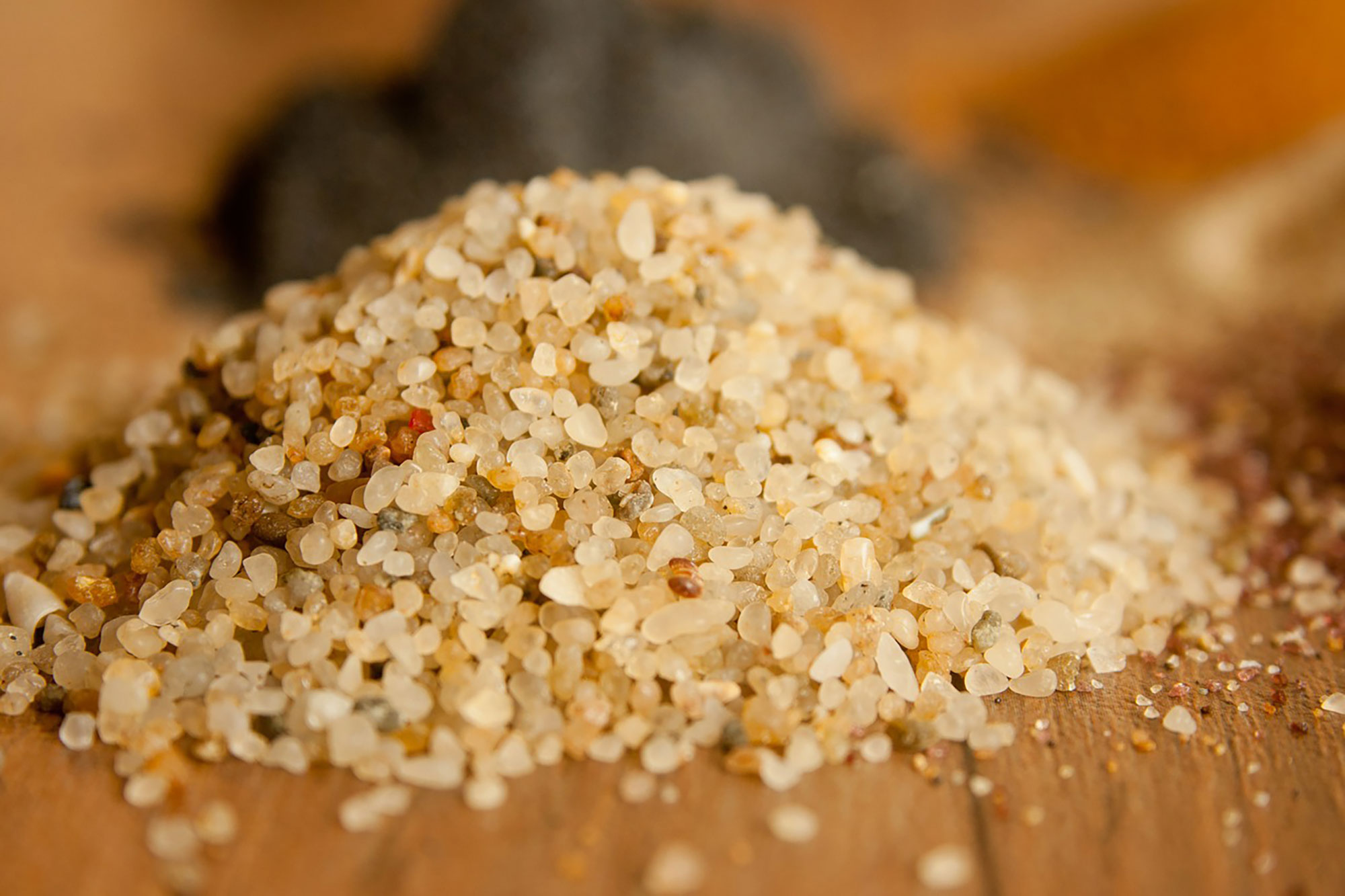
American Quartz
Some sellers market bowls made of “American” quartz. However, the source of silica sand is of little relevance in determining the sound of a bowl. Whether the silica sand comes from the United States, South America, India, or China, it will exhibit the same qualities. Bowl sellers that claim their quartz is from the United States are largely taking this information from the factories overseas that make the bowls and market them to the wholesale market in the United States. Some makers have gone to extremes to advertise their bowls as “American” in an attempt to set them apart. Nevertheless, it would be difficult to verify the source of quartz used in making any particular bowl because simply put: quartz is quartz. This is not to say that the sound of every bowl is the same because some manufacturers are able to make bowls that resonate longer and with different harmonic overtones. These properties do not, however, appear to be related to the source of the quartz.
In other instances, claims of “American Quartz” may be coupled with claims implying or stating that the bowls are made in the U.S.A. While it’s certainly possible to make a bowl in the United States (the United States has fused quartz product manufacturers), sellers currently making such claims generally do not provide any evidence of this occurring other than their word. One would expect to see pictures of these American factories or further information as to their location. One might also expect that tours of these factories would be offered to buyers. The sellers advertising their products as “Made in the U.S.A.” see this as a reason to charge exorbitant sums for bowls. And, on the flip side, some sellers seek to hide the country of origin altogether, making no claim as to where the bowls are made. Under United States law, country of origin is a required label on imported products but almost no seller in the states seems willing to comply with this law. Hamid’s advice is to just assume that every bowl is made in China (even the ones that say “Made in U.S.A.”). The point is, the place of manufacture is simply not relevant to the quality or sound. Take any claims of “made in the U.S.A.” with a grain of salt–or a grain of sand–and look to other measures of quality.
Chakra Tunings
The next myth involves the sale of so-called “Chakra sets,” which are generally sets of 7 bowls In the key of C-Major. That is, they assign the notes C, D, E, F, G, A, B to the 7 major Chakra, starting with C as the root (muladara) and moving up the scale. While this system creates an easy to use set of bowls, it does not appear to be based on anything other than marketing strategy. The Eastern systems from which the chakra understanding come did not use the same equally tempered scales as the west, making it very unlikely (more like impossible) that these systems would have placed a C-Major scale alongside the chakra in their practices.
This is not to say that these notes cannot be used to work with the chakra where that is the intention of the practitioner and the recipient. It simply means that practitioners should not fixate on particular notes as being the only way to work. For example, during Hamid’s travels in Asia he has studied with master bowl players (of the Tibetan variety) and heard numerous times that this C-Major system is not historically correct. The Tibetans use an entirely different system: F, C, G, D, A, E, B moving up in 5ths. Because the perfect 5th harmony is universally resonant and not based on equally-tempered ratios, this system sounds much more natural and works well in sound therapy. If historical accuracy is important, the Tibetans (and other cultures along the Himalaya) were using metal bowls well-before the invention of quartz sing bowls, so some deference might be paid to their system.
One will also encounter other notes outside of the C-Major scale now being sold to work with particular glands and organs. By all appearances, these “systems” have been developed to sell more bowls. There is no historical basis for these so-called glandular tunings, though there may be some evidence that certain frequencies will vibrate different tissues. Unfortunately, we do not have the means of evaluating the claims that accompany these types of bowls. They may well do what is advertised, but as of now it is not possible to verify the claims. Just like working with the chakra, perhaps it’s the intention that matters most along with the actual experience of the recipient. This is not to discount the value of bowls in working with the body (including subtle body), but practitioners need not feel constrained by the idea that only one note will work when many notes might also work well.
Frosted Crystal Singing Bowls
There are now several types of quartz crystal singing bowls in the marketplace. The most common are the “frosted” singing bowls. These types of bowls are the largest, heaviest, and loudest of the quartz singing bowls available. They provide the most vibration because of their thickness and size, which allows them to sustain a lot of vibration. Frosted singing bowls also tend to be the most affordable, with full sets of 7 bowls (the so called chakra sets) available for anywhere from $600-$2,000. The set pictured below is around $1,700 and is nearly perfectly matched.
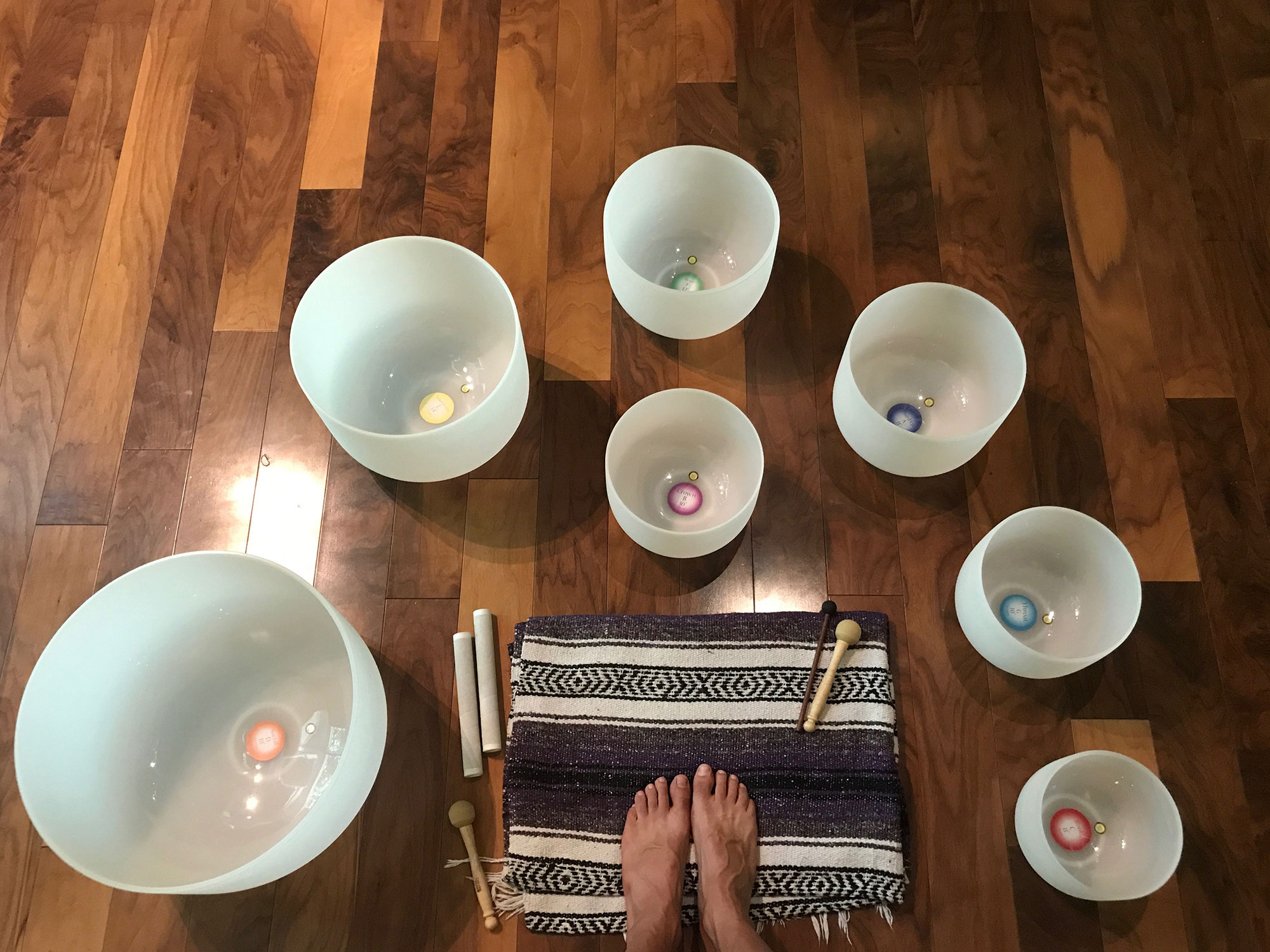
Set of Frosted Bowls 18″ to 8″
Clear Quartz Singing Bowls
One step above frosted bowls are clear quartz bowls, which are not as voluminous as frosted bowls, but produce much clearer tones. In general, clear bowls will be small and thinner in their construction. They are also more difficult to play than frosted bowls. As a result, clear bowls are used primarily by sound therapists and professionals who value their pure clear tones and who know how to properly use them. Unlike the frosted bowls, clear bowls produce harmonics similar to the newer Himalayan bowls. When sung, clear bowls emit a lower tone and when struck, a higher harmonic is heard. Clear bowls also sustain their sound for much longer than frosted bowls. Full chakra sets of clear bowls are often over $4,000 for a set of 7 matched bowls. Individual bowls are generally $300-$900 each for quality bowls, depending on the size and tunings. Hamid can custom order clear bowl sets for students and others in need of these high quality professional bowls. The set pictured ranges from 9″ down to 7″ and is a custom made 8-note perfect pitch incremental chakra set in the third-octave: C3, D3, E3, F3, G3, A3, B3, C4.
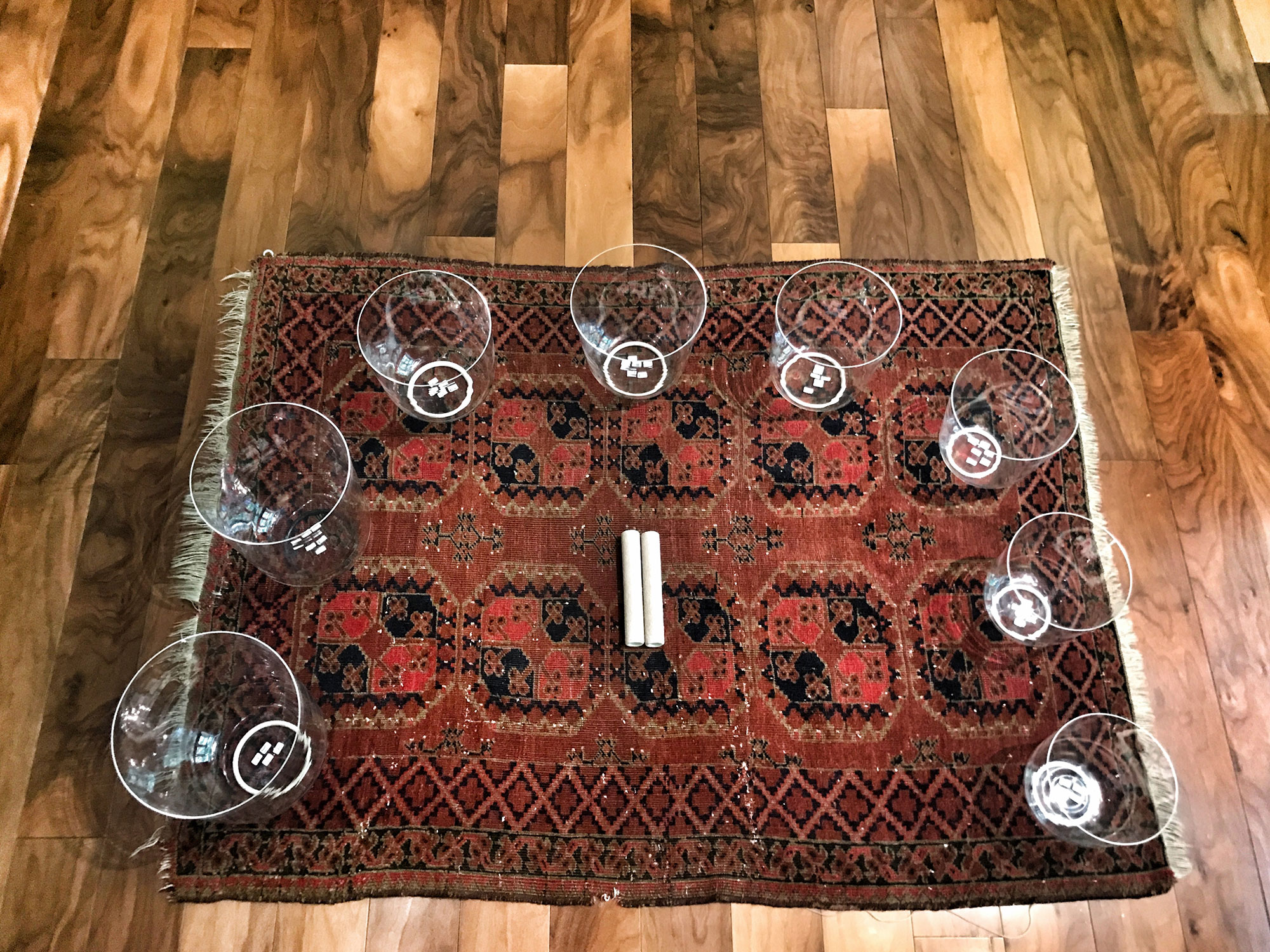
Listen to Hamid’s album Sonoran Sound Crystal Bowls vol. 1, recorded with the set of bowls pictured above, on iTunes, BandCamp, Apple Music, and Spotify.
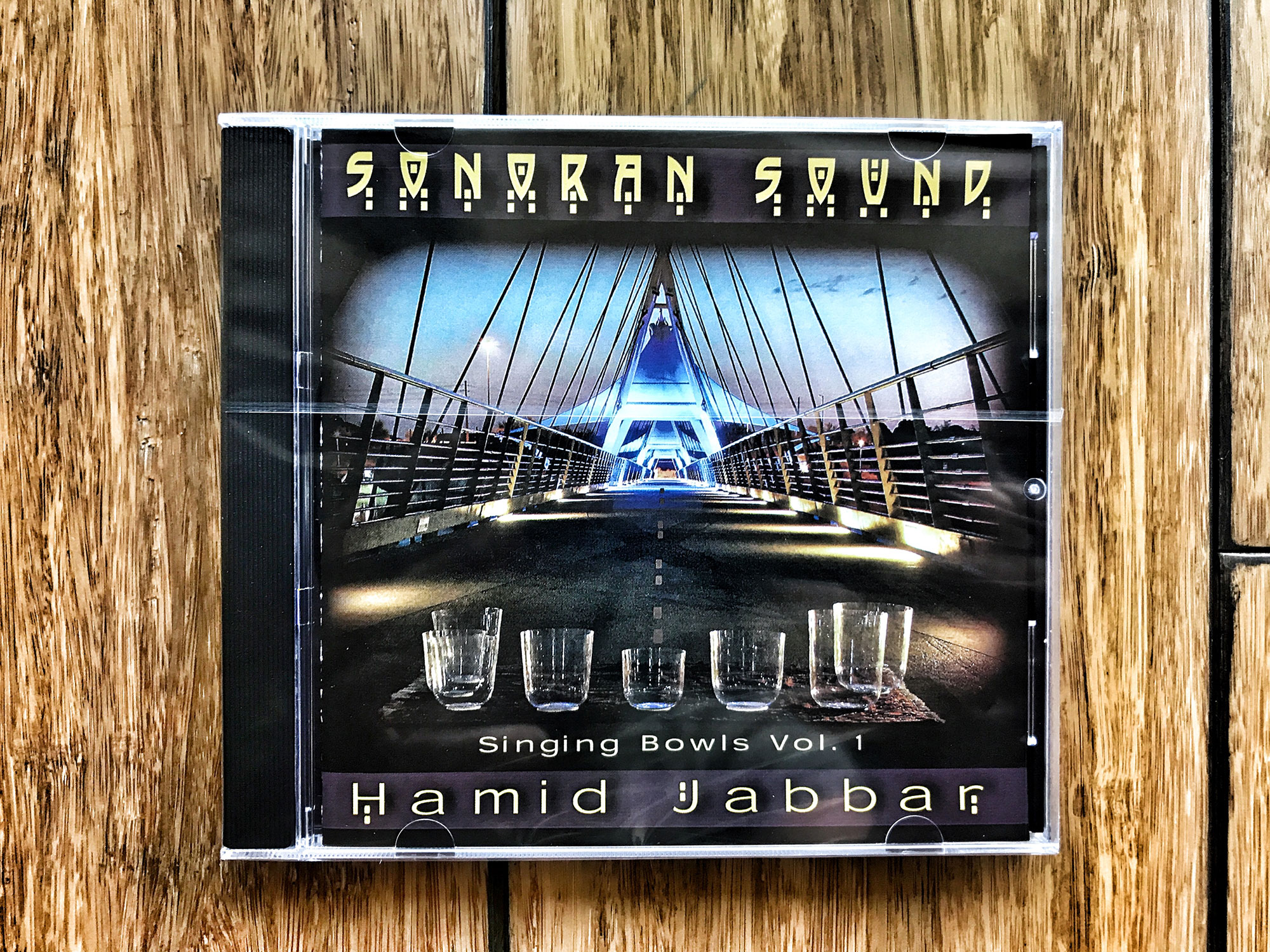
Gemstone (aka “Alchemy”) Style Bowls
Moving away from clear bowls, are bowls infused with metals and other gemstones. These are often referred to as “alchemy” bowls because of the alchemy produced by the combination of gemstones, minerals, or metals with the pure quartz. Though, Alchemy is a trademark of CrystalTones and should only be used when referring to their specific branded bowls. In the generic market, these are referred to as gemstone or fusion bowls. There are two types of gemstone bowls on the market. Some combine metals and minerals with frosted quartz bowls and others combine these metals and minerals with clear bowls. The sounds of these bowls comparable to their pure quartz counterparts, but because of the infused minerals and metals, they produce variations in sound with varying harmonic overtones. They tend to be marketed for their perceived energetic qualities and beautiful appearance. The pricing generally reflects their beauty and art-like nature, with bowls ranging from $600 to $2,000 or more for an individual bowl. As musical instruments, however, the inclusion of metals can render the sound of these bowls a bit more muted than clear bowls.
How to Buy Quartz Singing Bowls
Most of the sales of these types of bowls occur online making it difficult to hear the actual bowls being purchased. Even where sound files are available online, it’s impossible to get a true-to-life sense of the way a bowl feels and its energetic properties. In an ideal world, you would play and hear the actual bowls you are purchasing in person. Hamid works exclusively with trusted sellers of bowls located in the United States and can order nearly any bowl for any need at the best available price, with guarantees of quality. To work with Hamid on obtaining bowls, simply reach out to discuss what you are looking for. Hamid also maintains an online store that sometimes stocks crystal bowls, though it is not always fully up to date.
Looking to buy Crystal Singing Bowls, Gongs, or other instruments?
Visit our sister site,

